|
As part of the evolution of this project, the previous restriction of limited post-production has been lifted. In this release many of the original prototype recordings have been de-glitched and mastered. They're also joined by a few new pieces to form this double-length album.
Download Part 1 Download Part 2 I see three areas that this project could evolve towards:
1) Group laptop improvisations – where the samples generated in the studio are shared among all performers in either free improvisation, or with each laptop performer designated a role (e.g. beats, melody, bass/drone, effects processing). The collective output of these performances could then easily be recorded as polished album pieces. A system for recording synchronization between all laptops could easily be implemented over a wireless network (these files would then have to be mixed down), or an instant master recording could be made through the PA mixer. 2) Laptops with shared samples (as above) blended with live processing of acoustic instruments via microphones. In this case the recording space and quality of microphones would become an important factor as to the quality of the final product – a limiting factor that a purely laptop ensemble would not have. 3) The final logical extension of this is not only processing the live audio stream, but also capturing and manipulating fragments of it in real-time during, and as part of, the performance. With software custom designed for this purpose, both the individual sample fragments and the master output of each laptop could be saved at the end of the recording session – thus resulting in instant polished pieces of music with little or no post-production necessary, as well as generating processed collections of samples that would require little or no editing. This third option would ideally be undertaken by ensembles that play together regularly, so that a feedback loop of samples from previous sessions could inform the development of future sessions. I felt like testing the portability, and making music in a garden. So I made one of the pieces here at the Adelaide Botanic Gardens, sitting on a log. Actually worked really well.
I've decided to finish this phase tomorrow with one last piece - totaling 12 in 12 days. For a some time now I've had the long-term goal of creating a recording and sample-production setup that I could travel with, to be able to go anywhere in the world and record, sample and produce music - to experience a variety of cultures, atmospheres, people, instruments, musical styles, etc.
What interests me most about this idea is not just the recording interactions, but creating the music while in those places, and getting a performance/sampling feedback loop happening. Although this idea is not related to Streamland as it currently exists, nonetheless Streamland has laid the groundwork for at least the traveling production setup - laptop, headphones and NanoKontrol. A few compact portable mics and a compact mic stand are all that would be needed to fulfill the sampling aspect. Using USB mics could eliminate the need for an audio interface. Ideally, this is what I'd love to guide the Streamland concept towards. Hardware:
-Headphones - Sennheiser HD25SP -Laptop - MacBook Pro - 2Ghz Intel Core i7 - Mac OSX 10.6 -MIDI Controllers - Icon iControl, M-Audio Oxygen 61, Korg NanoKontrol2 (pictured) Software: -Audio Finder -Streamland - custom-built in Max 5 - with thanks to the work of Timo Rozendal for the grainstretch~ object As the process has evolved, I've explored the idea of a fixed improvisation setup - i.e. in the Streamland instrument, having several sample slots and effects pre-loaded and pre-MIDI-mapped. This way, at least a core set of controls could get into my muscle-memory, and I could develop a more immediate and focused auditory-tactile relationship, relying less on my eyes.
What eventually evolved was not to have anything pre-mapped, but rather to just develop a flexible consistency. This generally involved: -sample on-off triggers and sample reverse buttons in the same place on the QWERTY keyboard each time -volume faders mapped to the same or similar places (depending on what samples need a fader, and what could be grouped together on a single fader) -core effects mappings - for the basic effects setup that has been used almost everytime, and sometimes augmented with additional effects - dials mapped to delay time, delay feedback, reverb room size This would typically result in the entire control setup consisting of approximately: -20 QWERTY keys -8 faders -4 dials -and the laptop track-pad This setup is also completely portable - MIDI mappings were done with an Icon iControl, and I've now switched to a Korg NanoKontrol. Apart from this, just a laptop and headphones. Brief notes from two of the studio improvisors. They were asked to discuss their involvement in the studio process after being played some of my laptop improvisations:
Dan Thorpe I played to Al’s work, and played to what I thought he’d want, but then went beyond that also. I played to create something that was already complete, I thought of the recording session as one whole piece. Sampling is interesting because you take something that is complete and make something new out of it. And though it's complete, you can take something from it, without making it any less complete. Meredith Lane Listening to a sample of myself used in a piece feels removed from how I remembered playing, but I don’t feel precious about being recontextualized. The studio recording process was helpful, even though I consider the material Al's property and not mine, it was interesting to see how I’d play in that context. I was unfamiliar with being recorded in a studio, so I thought about playing in a different way - I tried to vary the session as much as possible, but felt like I got trapped in the nuances of my own style. I’m considering using the elements of the recording for my own work, but perhaps re-recording them myself. A few considerations on the music of Messiaen - a fellow synaesthete - that resonate with the Streamland idea.
"The bird's ritournelle (ritornello) not only defends a terrain, it also establishes continuously the terrain by encircling it with song. It is the bird's "song of the earth," linking place and color with sound, weaving together ornamented terrain (patterns of leaves, etc.) with ornamented rhythm. The ritournelle is simultaneously pure expression and a returning "fold" that wards off death and other threats and becomes also a song of courtship." The relevance of this for Streamland is simply in the aesthetics - I get a sense of this 'ornamented terrain' often when I make music. Patterns of leaves, the light in the spaces between and the colour of bird-songs are recurring inspirations and atmospheres that I sense myself within. "If one reverses a retrogradable series as follows: 1,2,3,4, 4,3,2,1, then the entire unit of eight elements is itself non-retrogradable, palindromic… these palindromic devices were associated with magical conjuring formulae and Messiaen spoke of a "good magic" that concerns the ability of music to invoke the cosmos in a new way and to evoke and alter human emotion." This idea of the palindrome relates to the technique in the Streamland instrument of sample reversing - flipping the playspeed of a sample backwards and forwards, effectively mirroring fragments. Pickstock, C. 2007, “God and Meaning in Music: Messiaen, Deleuze, and the Musico-Theological Critique of Moderism and Postmodernism” in Sacred Music, 134.4, pp40-62 Notes for refinement based on the improvisation process so far:
-often leaving loops playing for too long -most of the first 6 recordings did not feature much prominent performative FX tweaking, sample micro-looping, granular-suspension -tended to either be spacey and fragmented, or totally reliant on loop sync. Would like a balance of both -need to do some pre-preparation of ‘sections’ of musical material, so can easy change from one to the next and stay in flow -often turning up high pitched samples too loud for too long, they generally don’t need to be as loud as the rest -volume dynamics always slow, or immediate cuts. Other dynamics speeds, and techniques like swells and fluctuations -not using any panning techniques – static or dynamic – on samples or FX -not being bold with FX, not experimenting with new techniques and combinations -apart from glitch sounds, otherwise all high fidelity – explore low fidelity in other aspects – perhaps process samples in Audition, or get some of the dirtier mixdowns, and explore the textures of noise floors, etc -reveal the inner working of the technology through the music – travel further away from sounding like acoustic recordings -lack of rhythmic samples and combined samples in the collection – do a few Audition sessions of editing together rhythms and combining rhythms of different instruments together So the story goes that Schoenberg did not agree with his serial music being called "atonality" - his idea was to embrace all tonalities, not reject them. And so he preferred the term "pan-tonality".
So I've had an idea for a long time, and until I heard about this, I couldn't properly ground it. In the realm of audio, I've always had a problem with mixes that are too clean - sterile sounding - where the rawness is absent. On the other hand if a mix is too dirty, clarity and presence will eventually be lost to entropy. So I think a balance needs to be struck that embraces the spectrum from high to low fidelity. High and low fidelity have different characters, different timbres, and evoke different human responses. They expand the palette of audio production. To me this is a continuum that could be flowed through freely when making music - and much work has been done already with glitch music, chip-tune, bit-reduction effects, etc. I think the scope for exploring this further is huge, and great potentials exist for expressiveness through transformations and combinations of fidelity, if explored with conscious intention. Also, considerations of "parallax-fidelity" seem to be a natural extension of this. Layers of fidelity that add to the perception of a sound being closer or further away - moving at different rates, as does a parallax landscape. My experiments with Streamland are moving towards establishing the groundwork for this idea. |
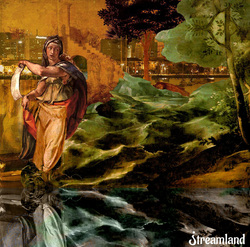
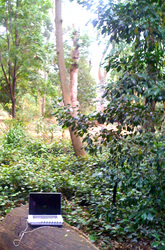
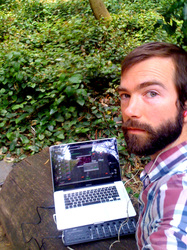
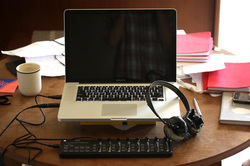
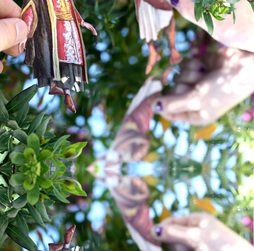


 RSS Feed
RSS Feed